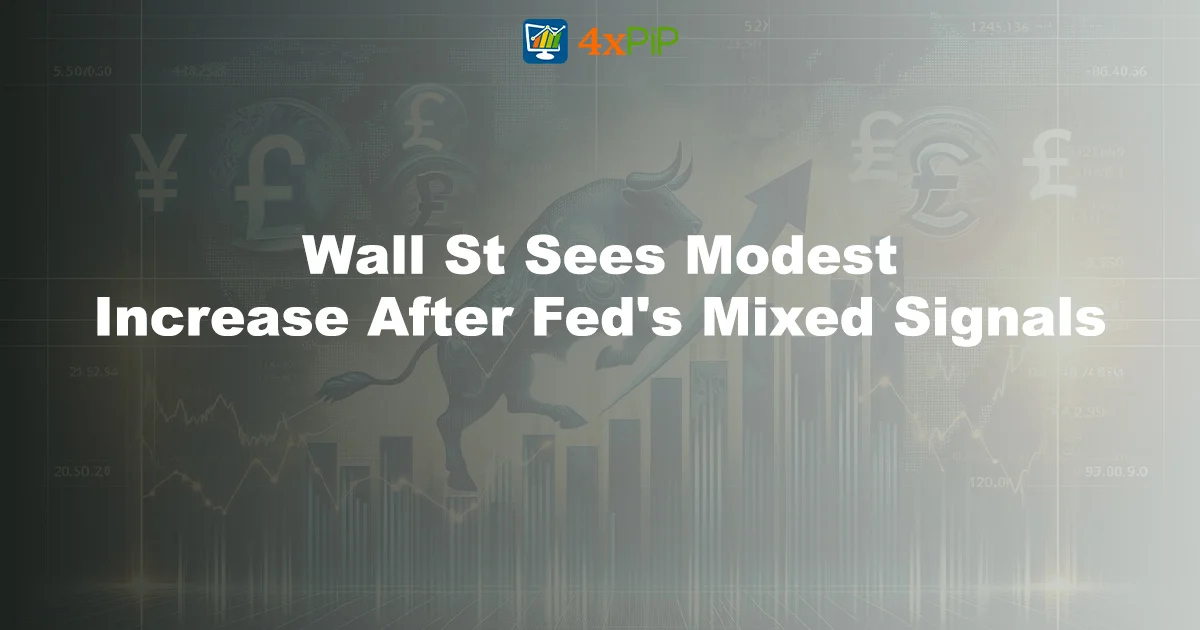In the complex world of finance, Wall Street recently witnessed a nuanced dance as Federal Reserve officials delivered conflicting signals. The market responded with a modest increase, navigating the intricate web of statements from key figures within the Federal Reserve. Oliver Pursche, Senior Vice President at Wealthspire Advisors, likened this to a marathon, where pauses are natural even in strong market conditions. As the year-end approaches, investors grapple with the implications of these mixed signals. In this analysis, we delve into the Federal Reserve’s conflicting messages, the market’s response, economic indicators, stock highlights, and the closing dynamics of Wall Street.
For further insights and expert guidance on navigating the financial markets, reach out to 4xPip at [email protected].
Federal Reserve’s Conflicting Signals:
The day unfolded with conflicting remarks from Federal Reserve officials, prompting investors to carefully parse each statement. Fed Governor Christopher Waller expressed increasing confidence in the current policy rate but hinted at potential rate cuts should inflation deviate from the 2% target. In contrast, Chicago Fed President Austan Goolsbee applauded progress in controlling inflation, while Fed Governor Michelle Bowman suggested the potential necessity of another rate hike. This mixed messaging is not uncommon, especially when the Fed is approaching the end of a cycle, as different members hold varying views on tightening.
These signals injected a degree of uncertainty into the market, causing fluctuations in momentum throughout the session. As the Federal Open Market Committee (FOMC) meeting approaches, traders closely analyze these signals for clues on the future trajectory of monetary policy.
Market Response and Projections:
Despite the conflicting signals, the market exhibited resilience and ended with modest gains. The Dow Jones Industrial Average rose by 83.51 points, the S&P 500 gained 4.46 points, and the Nasdaq Composite added 40.73 points. The mixed messages from the Federal Reserve prompted a nuanced response from investors, resulting in a range-bound session that concluded in the green.
Market participants are now projecting a near-certain likelihood that the FOMC will maintain the current Fed funds target rate at its next meeting. Additionally, this projection, standing at 98.9%, reflects the market’s anticipation of stability in the current policy rate. The mixed dynamics set the stage for a careful balance. Moreover, as the market navigates economic uncertainties and interprets the Federal Reserve’s intentions, further attention will be given to any potential shifts in the central bank’s stance.
Economic Indicators and Consumer Sentiment:
Amidst the financial intricacies, economic indicators and consumer sentiment play a pivotal role in shaping market dynamics. The crucial holiday shopping season has commenced with optimistic consumer spending plans, indicated by survey data from the National Retail Federation. Correspondingly, the Conference Board’s consumer confidence data showed improvement in near-term expectations, surprising to the upside.
As the week progresses, traders await key economic data releases, including the Commerce Department’s second estimate for third-quarter Gross Domestic Product (GDP) and the Personal Consumption Expenditures (PCE) report. These reports will provide insights into income, spending, and crucially, inflation, offering a comprehensive view of the economic landscape.
Stock Highlights:
Within the market fluctuations, certain stocks stood out. Boeing saw a 1.4% advance after an upgrade by RBC Capital Markets. Chinese e-commerce firm PDD Holdings surged 18.1% after beating revenue estimates, showcasing the influence of company-specific performances amidst broader market dynamics. Affirm Holdings jumped 11.5%, extending its Cyber Monday boost, and emphasizing the role of seasonal trends in stock movements.
However, not all stocks experienced positive movements. Chipmaker Micron Technology’s shares slid 1.8% following an announcement of higher-than-expected first-quarter operating expenses. These stock highlights underscore the importance of individual company performance amid broader market trends.
Market Dynamics and Closing Stats:
Market dynamics played a crucial role in shaping the closing statistics. Additionally, eight of the 11 major sectors of the S&P 500 closed in positive territory. Moreover, consumer discretionary shares led the gains. However, healthcare stocks suffered the day’s biggest percentage loss, highlighting sector-specific impacts. Furthermore, the closing stats reveal the nuanced nature of market movements. Again, these movements are influenced by a combination of sectoral trends and broader economic indicators.
Volume on U.S. exchanges was 10.03 billion shares, slightly below the 10.41 billion average for the full session over the last 20 trading days. This moderate volume reflects a cautious approach by investors as they navigate the uncertainties presented by the Federal Reserve’s mixed signals.
Summary:
In summary, Wall Street’s modest increase following the Federal Reserve’s mixed signals reflects the market’s ability to navigate complexities. Conflicting remarks from Fed officials injected uncertainty, prompting a nuanced market response. Economic indicators and consumer sentiment played a crucial role, in influencing both individual stocks and sectoral dynamics. As the market approaches the year-end, investors remain vigilant, balancing projections, and real-time economic data.





